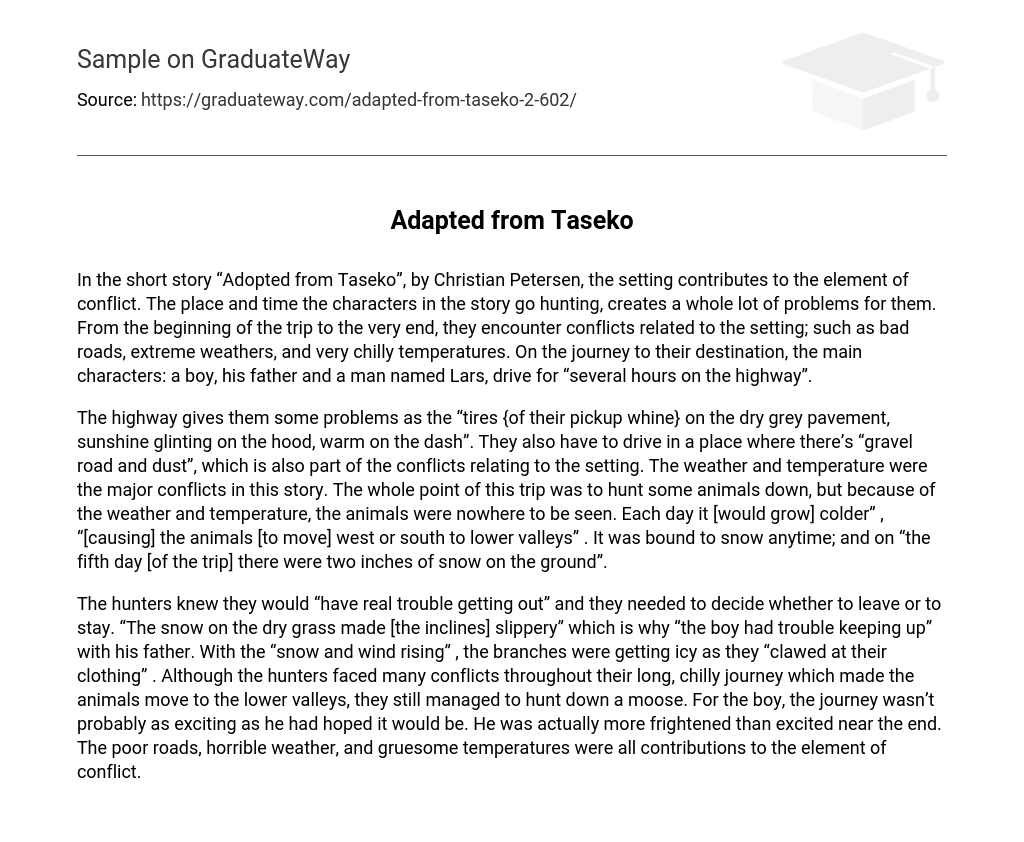In Christian Petersen’s short story “Adopted from Taseko”, the setting plays a crucial role in establishing conflicts. The specific location and time in which the characters embark on a hunting trip introduces a multitude of problems. Throughout the entire journey, they continually face challenges arising from the setting, including poor road conditions, severe weather conditions, and freezing temperatures. As they travel to their destination, the primary characters—a boy, his father, and a man called Lars—spend “several hours on the highway”.
The challenges they face on the highway include the sound of their pickup tires on the dry grey pavement, the gleaming sunshine on the hood, and the warmth on the dash. Additionally, they must navigate through a place with gravel road and dust, which contributes to the conflicts of their surroundings. The main sources of conflict in this story are the weather and temperature. Their objective for this trip is to hunt animals; however, due to the unfavorable weather conditions, they cannot find any animals. As each day passes, it becomes colder and forces the animals to relocate towards lower valleys in either west or south directions. Snowfall is approaching rapidly, with two inches already covering the ground by day five of their trip.
Despite the snow creating slippery inclines and causing the boy to struggle keeping up, the hunters had to decide whether to stay or leave, knowing they would encounter difficulty getting out. As the snow and wind increased, the branches became icy and clawed at their clothing. Throughout their lengthy and cold journey, conflicts arose that forced animals to relocate to lower valleys; however, they still managed to successfully hunt down a moose. Unfortunately for the boy, his experience on this trip fell short of excitement as he had anticipated. In fact, he grew more frightened than excited towards the end due to poor road conditions, dreadful weather, and chilling temperatures—all contributing elements of conflict.





